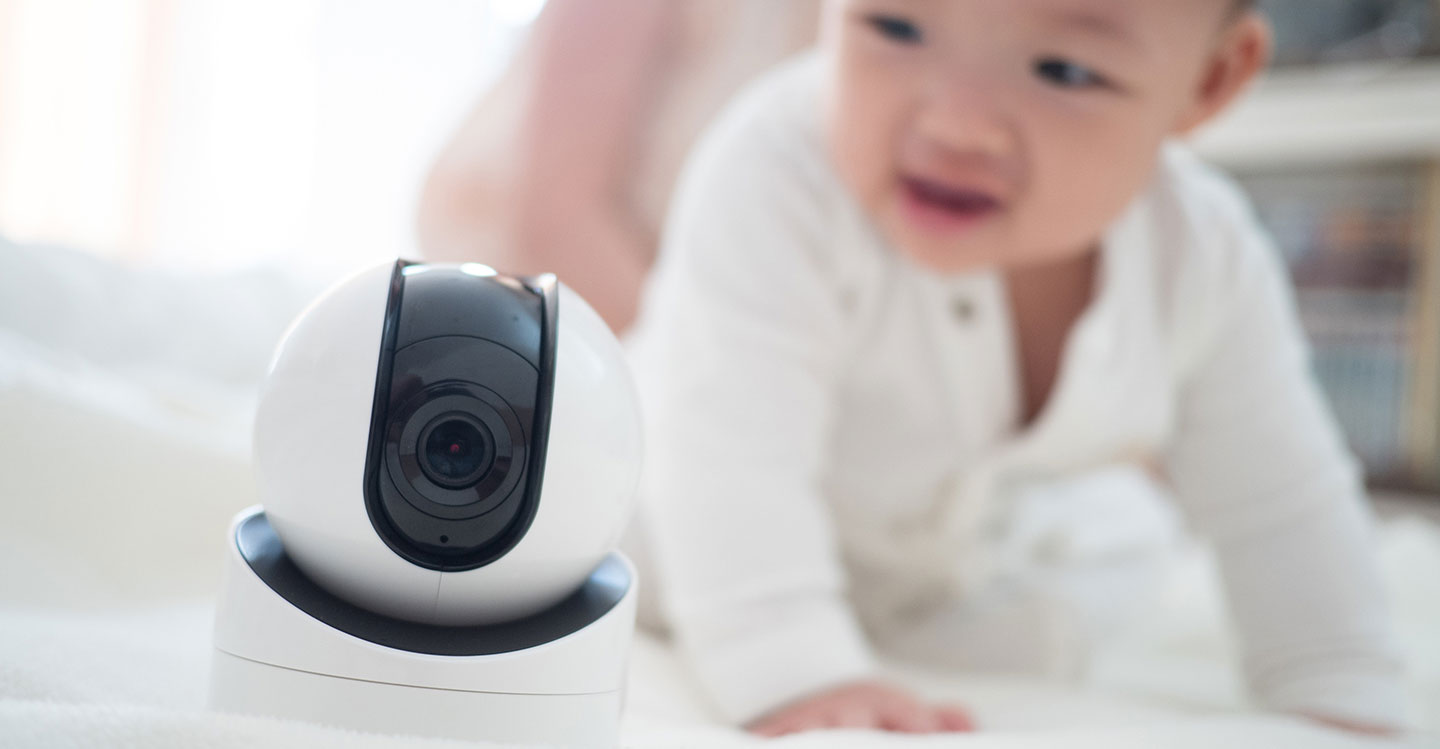Baby monitors and your baby

Baby monitors are a tool some parents use to keep an eye and ear on their baby when they’re out of the room.
Why use a baby monitor?
Depending on the type, a baby monitor can alert you if your older baby or toddler moves or makes any sound, such as crying when they wake up. They’re not an essential nursery item, but monitors can provide you with the flexibility to be in other parts of the house but still know if your baby needs you.
Some specialist monitors are used for babies with medical conditions, for example, if their breathing or heart rate needs to be monitored (see below). Others can light up or vibrate for parents who are hearing impaired.
The different types of baby monitors
There are lots of baby monitors to choose from and one for every budget!
- Audio only – These monitors are like one-way walkie-talkies. They may use radio, mobile data or Wi-Fi to let you hear when your baby is crying or waking from sleep. Depending on the brand, they can also have a built-in night light or play lullabies or soothing sounds.
- Audio-visual – In addition to being able to hear your baby, these monitors also let you watch your baby from a receiver or phone app.
- Movement monitors – Using sensors within their cot or attached to baby, these monitors will send an alarm when your baby stops moving, or their tummy stops rising, after a set period of time.
- Heart rate, oxygen and breathing – Often only used on the advice of a doctor and if your baby has a medical or developmental condition. These specialised monitors alert you if your baby’s heart rate, breathing or oxygen levels become irregular or fall below a certain level. They often come with additional sensors that must be affixed correctly to ensure accuracy. It’s important that you have a plan in place for when the alarm goes off, and this plan must be shared with anyone caring for your baby.
Baby monitor safety
A baby monitor is just an alarm. There is no evidence that baby monitors can prevent Sudden Infant Death Syndrome (SIDS). In addition, batteries, apps, power, and Wi-Fi can all fail, and solely relying on an alert from your baby monitor may delay your ability to provide much-needed attention.
There is no substitute for being in the same room as your baby, which is why it’s recommended that an adult is in the same room as a baby for every sleep for the first six to 12 months of their life. Sharing a room is linked to a reduced risk of SIDS and sudden unexpected death in infancy (SUDI).
If you do install a baby monitor, be sure to physically check on your baby regularly and follow other expert advice to ensure your baby sleeps in a safe environment.
More information about baby monitors
A health professional will be able to give you advice about using baby monitors. Speak to a paediatrician or your child and family health nurse first if you are considering using a specialist baby monitor.


